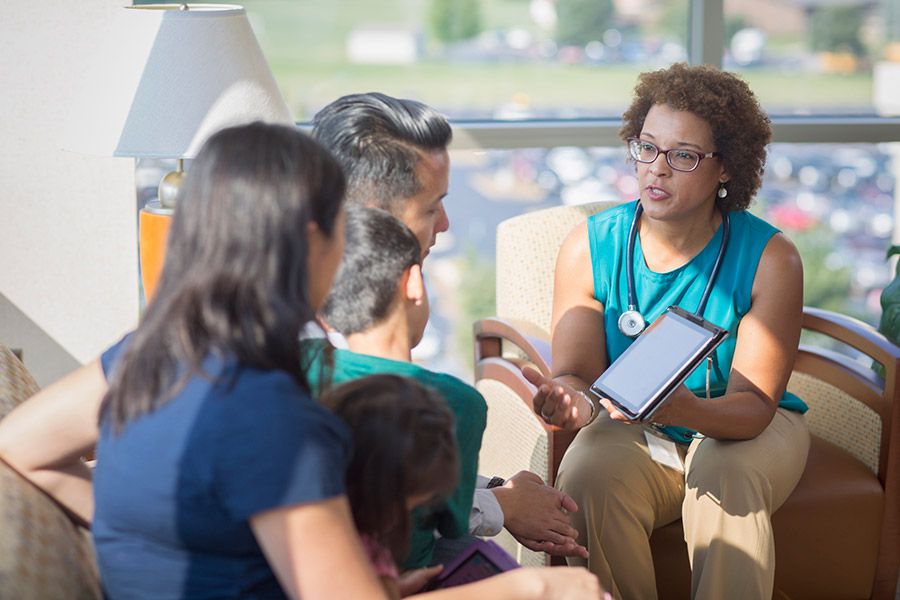S P I K E S Model
Some health professionals may find it useful to use a model to assist in undertaking a difficult conversation, one example is the SPIKES model,1 which is outlined below.
S — Set up
The pre-planning of a meeting is just as important as the meeting itself. Identify who is responsible for informing the family of a meeting and make time to:
- Clarity about reason for meeting so the family don’t stress (may have experienced difficult or “bad” meetings)
- Ask family to think about issues they may like to raise
- Ask the family who they think should be there. Ensure appropriate supports are available for the family (maybe a friend, relative or trusted staff member)
- Organise interpreter, if required.
- Ensure a private and quiet space is available where all can sit down. Offer a cool or warm drink and ensure the room has tissues within reach
- Minimise interruptions — keep phones outside if possible.
If multiple teams are involved, arrange a time to meet beforehand to ensure consistency in the information to be given and to appoint someone to lead the discussion.
When sitting down, think about who sits where. Ensure the space feels supported and avoid professionals on one side and family on the other.
P — check perception
Find out what the family understands about the situation currently.
I — invitation
Let the family know that some of what you have to say may be difficult for them to hear. Find out if it is okay to discuss such things right now.
K — give knowledge/information
Provide information in small chunks. Try to speak in plain language. Stop at regular intervals and check understanding. Be aware that your own anxiety may lead you to speak quickly and in too much detail and that you may revert to the comfort of technical language.
E — respond to emotion
It is hard for parents to process information when they are frightened or very sad. Allow room for the expression and acknowledgement of emotion. Sit with it. If you feel confident, respond to the emotion.
The mnemonic ‘NURSE’ suggests five possible ways of responding:2
- Name: State the emotion (if you are not sure, you can say, ‘I’m wondering if you are feeling x’)
- Understand: Empathise with and legitimise the emotion (be careful not to say, ‘I understand’, because you don’t)
- Respect: Praise the parent for their strength or honesty
- Support: Show support
- Explore: Ask the person to tell you more about what they are feeling.
You may be the only person in their circle who can allow them to share how they feel. You don’t need to ‘fix it’.
S — Summarise
Provide a brief summary and ask the family if they have understood. Make a plan even if it is only to keep talking. Ensure they know there will be opportunities to speak again and to ask questions. Acknowledge their courage.
When talking with parents about their child’s illness and trying to get a sense of their values, fears and hopes, Associate Professor Joanne Wolfe from the Boston Children’s Hospital uses five ‘cardinal questions’.3
- Who is your child (as a person)?
- What is your understanding of your child’s illness? What does the illness mean to you and your family?
- In light of your understanding, what is most important regarding your child’s care?
- What are your hopes for your child? What are your fears and concerns regarding your child?
- Where do you find support and strength?
These questions are gentle and exploratory and the responses are often very illuminating.

